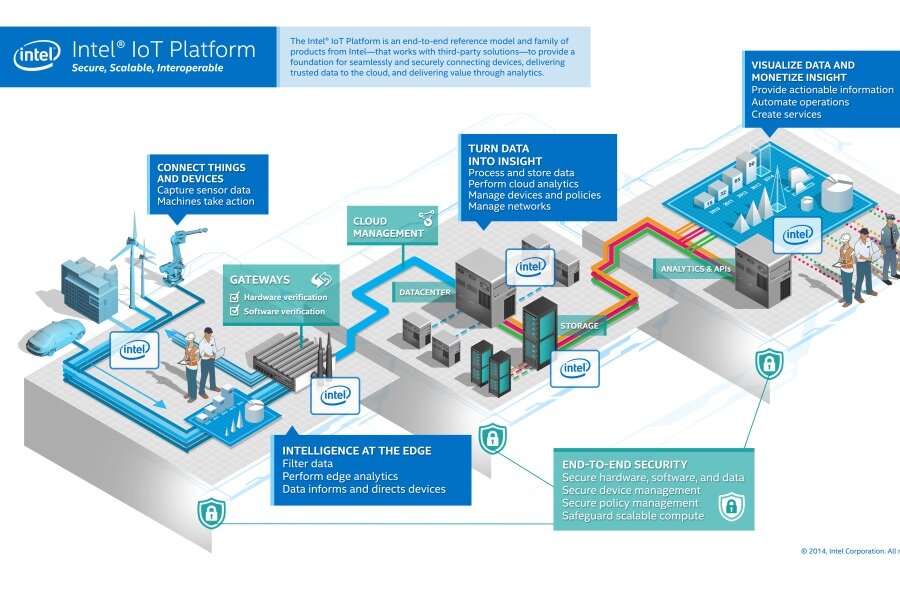Intel embraces the Internet of Things with new plan to link all your devices together
Loading...
For several years now, chipmaker Intel has been setting its sights beyond computers and tablets to the Internet of Things – the networks connecting “smart” versions of everyday appliances such as fridges, thermostats, and watches.
The Internet of Things (often abbreviated to IoT) will let people manage more and more aspects of their daily lives online, from controlling the lighting and heat in their homes to determining when they need to buy groceries.
Intel, whose chips power many of the devices connected to the IoT, formed a special “Internet of Things” division within the company last year, and this week it unveiled a new platform designed to seamlessly link devices and appliances together.
The Intel IoT Platform is designed to be an easy system over which devices can connect with one another and with the Internet, while working to keep that data away from hackers and snoops. Intel says hardware and software companies will be able to use the platform to create devices that connect to the Internet of Things more easily and securely than they do right now. That way, users will be able to use their devices -- including wearables such as smart watches -- to control connected appliances in their homes without having to go through a complex setup process, and without exposing device data to others. Businesses and organizations will also be able to use data gathered by smart devices to improve manufacturing and business processes.
Intel is by no means the only player in the Internet of Things, but the company has been focusing a lot of its attention on interconnected devices. Intel expects its IoT group will bring in $2 billion in revenue this year, and earlier this year the company debuted “Edison,” a tiny $50 chip designed to power wearable devices and other “things” in the Internet of Things. Intel missed out on consumers’ transition from computers to tablets and phones, losing a lot of ground to the rival ARM chipset, and Intel is determined to be a part of the rise of the Internet of Things.
One reason the Internet of Things has grown so rapidly is plummeting electronics prices. Sensors today cost half of what they did a decade ago, and processing costs are a sixtieth of what they were in 2004. That makes it easier for companies to include small chips in all sorts of devices, allowing consumers to control those devices over the Internet. There are about 25 billion devices currently connected to the Internet of Things, and Intel predicts that the IoT will grow to between 40 and 50 billion devices by the end of the decade. It may not be too long before we’re all able to easily control our homes and our diets right from a tablet.








